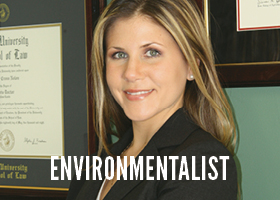Raising the Bar
Envisioning the Future to Leave a Lasting Legacy
Read MoreIn Chambers’ club industry survey, Club ’22 — Club of the Future, we asked a series of questions about interest in and the importance of sustainability for private clubs. Responses ranged from those who felt clubs have a unique responsibility for environmental stewardship — as pillars of their communities and major land users — to a small percentage who felt sustainability just wouldn’t be a club industry priority (4.4%). Most fell in the “We’re doing our part but could do more” camp (65%).
When it comes to building and capital improvements, however, there seemed to be a resounding chorus of “Unfortunately, it’s just not financially feasible” for the industry. With so much interest and sweeping skepticism, we set out to determine if that really were the case and to find out what the experts in the design and building industry might offer as options for being — and building — green.
RJ Donnelly, vice president of Donnelly Energy Solutions — the green building arm of Donnelly Construction — doesn’t yet see a tremendous emphasis on green building in the private club space. He expects a sea change when club leadership begins to transition to younger generations in the coming years who are “more aware of both the long and short term benefits” of investments in green building,” he says. Still, Donnelly makes the case that clubs can make a significant difference now, with low cost investments and those with clear and/or immediate returns on investment, and with a few behavioral changes.
Among his suggestions:
Take advantage of resources at your disposal:
 MaryLynn Mellinger
MaryLynn Mellinger
LEED Green Associate & Interior Designer
Chambers
Chambers Interior Designer MaryLynn Mellinger admits, “Everyone has good intentions, but in the end, costs speak volumes.” She expects that it may take legislative pressures for private clubs to significantly change their building practices, but suggests that in the interim clubs can look to lessen their impact on everything from carbon emissions to water usage. Low cost options with big impact? “Install bike racks, use mulch!”
The Weitz Company focuses on environmental responsibility in every one of its building projects, says Executive Vice President Greg Carlson. While Carlson acknowledges that the process to achieve LEED certification (the U.S. Green Building Council’s green building verification program) can be costly for private, not-for-profit clubs, the paperwork isn’t as important as the effort. “Everyone wants to do the right thing,” he says.Senior Project Manager Michael Thomas, who works predominantly in Florida, is seeing progress where building codes mandate compliance. He also sees opportunity for clubs to take “reasonable steps” that can net significant impact, noting that Weitz often includes in its standard building package, “salt water pools, low-VOC paints and materials, low energy lighting and systems to control electricity use based on occupancy.”
 Jennie Nolan
Jennie NolanAttorney, Professor and Environmentalist Jennie Nolan helped write the book on sustainable building — literally; she partnered with the USGBC in the development of a manual for building sustainable neighborhoods. Her advice to clubs trying to balance the desire for better environmental practices and cost concerns:
“I’m not an economist,” says Jim Goodman, general manager of The Glacier Club in Colorado. Still, Goodman reasons that “some initiatives will make sense and provide ROI (return on investment) and some may never generate the return we want.” So he looks at environmental responsibility as a zero sum game. “As a whole, the pursuit of environmental initiatives can be financially viable,” he says, pointing out that the art is in the balance — that is, offsetting the more costly initiatives with ones that generate measurable financial benefit. “We are always trying to produce programs that provide environmental benefits and generate savings that can, in turn, fund other initiatives that may not net the same kind of financial results.”
Comments
0 Comment(s)
Show Comments